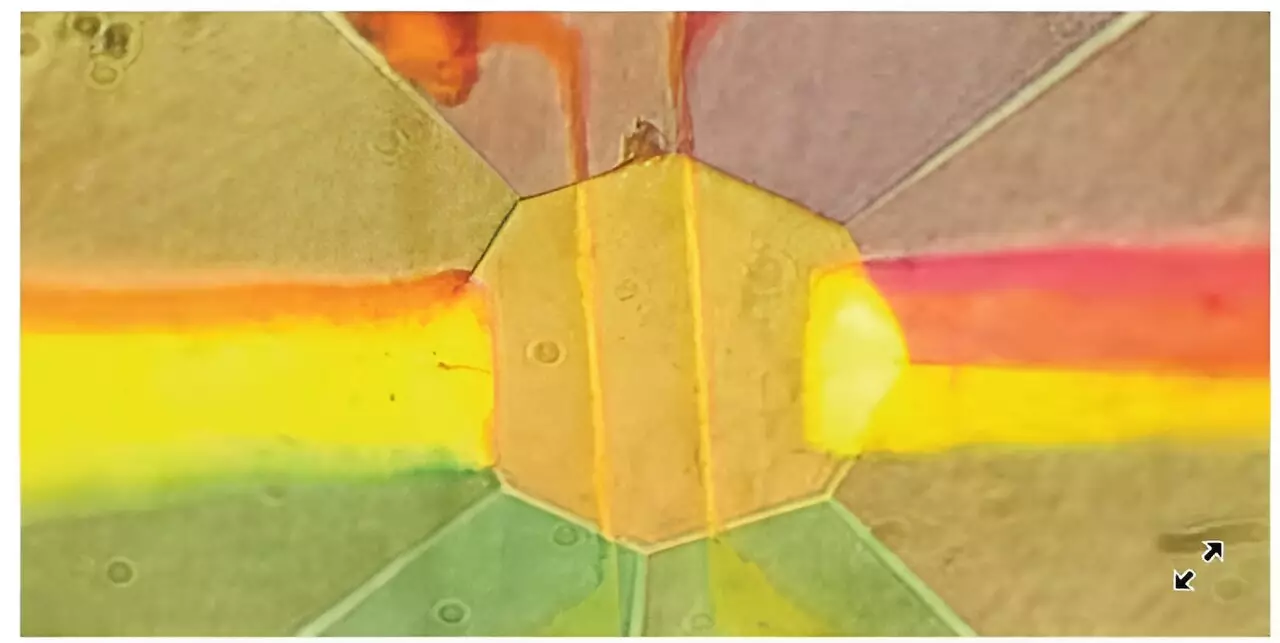In the annals of scientific achievement, the discovery of superconductivity in 1911 by Heike Kamerlingh Onnes marked a revolutionary turning point for material science. The application of metallic mercury at cryogenic temperatures spotlighted a phenomenon whereby electrical resistance dissipates entirely. This groundbreaking revelation sparked an insatiable curiosity among scientists to comprehend the intricate mechanics behind this elusive state of matter. The pinnacle of this ongoing quest is the pursuit of superconductors that operate at room temperature, drastically enhancing the efficiency of energy transmission and storage.
As researchers diligently probe the properties of diverse materials, they often encounter a compelling conundrum: many elements only transition into superconducting states under extreme conditions, particularly high pressure. For example, sulfur, which is commonly recognized as a nonmetal, has conventionally been overlooked for its superconducting properties. Recent findings suggest that under pressures exceeding 90 gigapascals—nearly a million times greater than atmospheric conditions—sulfur morphs not only into a metallic form but also into a superconductor when cooled. This underlines an essential perspective in superconductivity: the potential transformation of materials we take for granted into groundbreaking resources with enhanced capabilities.
A Breakthrough Technique in Tunneling Spectroscopy
The latest research conducted by an international consortium of scientists from Germany and the US lays the groundwork for a significant advancement in materials science. They devised an innovative technique to accurately measure the superconducting properties of sulfur under extreme pressure conditions, a task that has historically posed many challenges. This research, recently published in the esteemed journal *Physical Review Letters*, offers new insights that could potentially reshape the understanding of superconductors at unprecedented pressures.
To conduct their investigations, the research team employed a diamond anvil cell, a sophisticated instrument capable of exerting enormous pressures on minute samples. This device, utilizing a pair of diamond tips to apply force symmetrically, enables researchers to probe the electronic properties of materials at depths previously thought unattainable. They crafted a planar tunnel junction directly within the diamond anvil cell, thereby circumventing issues commonly faced by past techniques. The seamless integration of this junction allowed for thorough examinations at pressures exceeding 1 megabar (100 GPa) without compromising the integrity of the samples.
The Mysteries of Cooper Pairs and Electronic States
At the heart of superconductivity lies the phenomenon known as Cooper pairing, a critical aspect for its realization. In this context, the research team successfully validated sulfur’s ability to form Cooper pairs at the critical temperature of 17 Kelvin. Observing this pairing at such pressure states offers profound implications for the understanding of superconductivity’s underlying mechanisms. The measurements made using tunneling spectroscopy reveal that the energetic configurations of electrons around the Fermi energy level—the demarcation of occupied and unoccupied states—play a substantial role in determining the superconducting properties of a material.
Notably, while the successful measurement of sulfur’s superconducting properties marks a milestone, it also paves the way for future explorations into other materials that could demonstrate similar or more advanced superconductive behaviors. Scientists are eyeing exotic compounds such as hydrides and nickelates, which hold the promise of further revelations that could potentially lead to the long-sought-after room-temperature superconductors.
Implications for Future Research
As the researchers embark on the next phase of their inquiry, the implications of their findings escalate beyond mere academic curiosity. With each layer of complexity peeled back, the chance to discover a superconductor that operates under ambient conditions seems increasingly plausible. “By developing a ‘microscope’ for superconductivity in pressurized environments, we are not just revisiting myriads of materials but broadening the horizons for practical applications in energy efficiency and advanced technology,” remarks Feng Du from the Max Planck Institute for Chemistry. The convergence of theoretical insights and experimental validation is vital in propelling material science into a future where energy is transmitted with utmost efficiency, thus illuminating possibilities for widespread adoption in various sectors.
The current emphasis on research in superconductivity signifies a paradigm shift in how we perceive and harness material capabilities. Confronting daunting dilemmas surrounding energy consumption and environmental sustainability requires innovative solutions, and superconductors are increasingly being viewed as a key component in constructing a more responsible energy landscape. Thus, as researchers look to the next frontiers in this thrilling domain, they may ultimately forge pathways toward profound technological advancements.


Leave a Reply